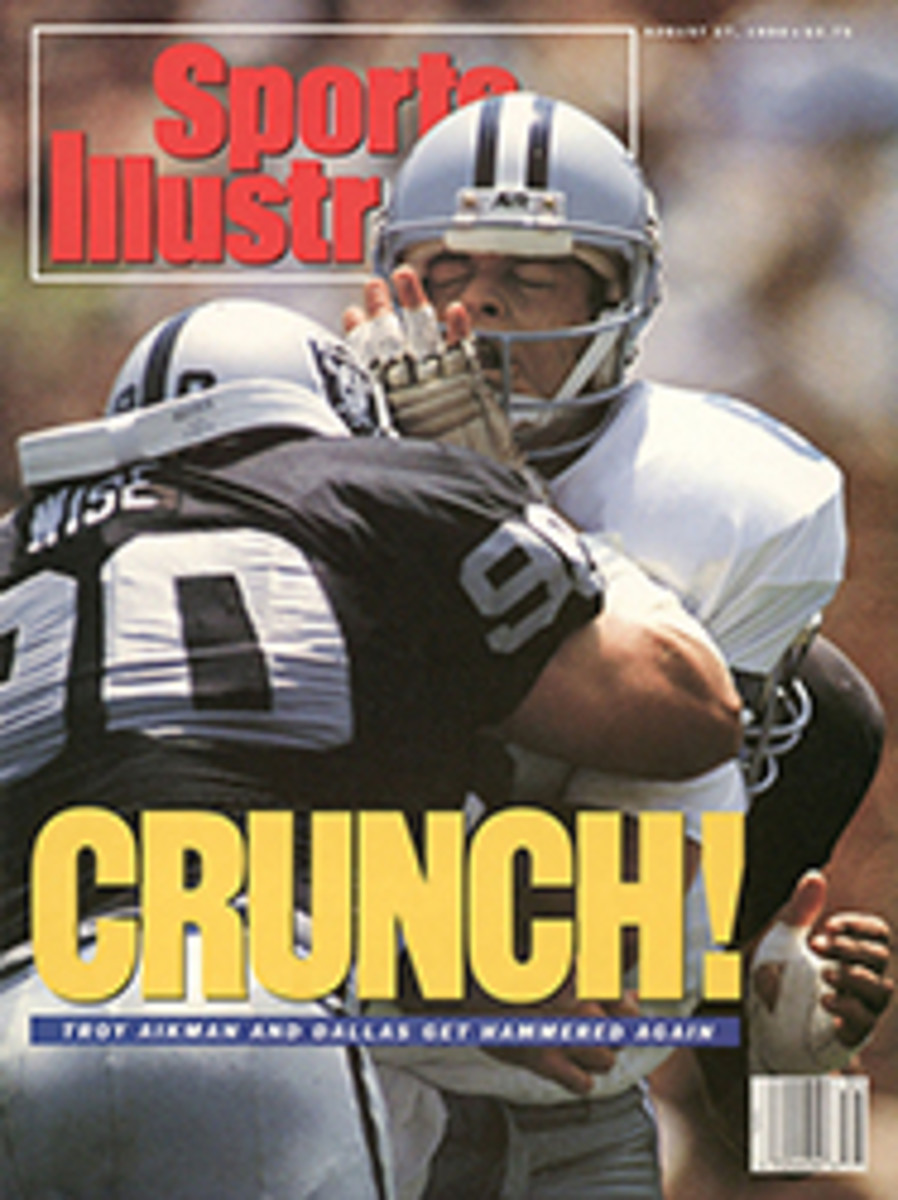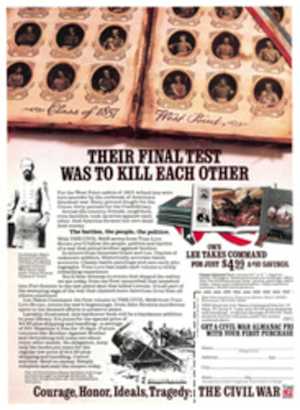
SCORECARD
SHARING THE WEALTH
The NCAA's executive committee last week passed a proposal under which schools in all divisions would share to some extent in the $1 billion the NCAA will get from CBS over the next seven years for rights to the NCAA basketball tournament. The method of distribution would be more equitable—and less performance-oriented—than the current system, in which teams are paid based on their tournament showings.
Here's how the roughly $115 million-a-year windfall would be distributed under the scheme, which will be brought up for final approval at next January's NCAA convention:
•All Division I schools would get shares, the size of which would be determined by two factors: 1) the performance of a school's conference in the NCAA tournament over the previous six years (the NCAA has yet to determine how to handle independents) and 2) a combination of the number of sports programs a school operates and the number of athletic scholarships it hands out. The first criterion would ease the financial pressure to win; the second, designed to promote athletic opportunity, would guarantee that colleges with broad-based athletic programs would get large pieces of the pie even if they don't do well in basketball.
•Each Division I school would get an estimated $20,000 to $50,000 a year for "academic enhancement" programs for student-athletes.
•A portion would go to fully fund catastrophic health insurance for athletes in all three NCAA divisions. At present, the NCAA fully funds such insurance only for Division I men's and women's basketball players.
•The NCAA would increase its funding of food and lodging costs for schools participating in any Division II or III championship. Currently some Division II and III schools that compete in championship events lose money because of the food and lodging costs.
•Another chunk of the money would go to establish a fund for needy Division I athletes. Says NCAA executive director Dick Schultz, "This will be for special items, not spending money." For example, the fund, a pet "project of Schultz's, might allow a poor athlete to go home for Christmas.
In an ideal system, a school's share of NCAA money would be based only on the number of sports programs and athletic scholarships it offers. That would make athletic opportunity absolutely paramount. But such a plan would be unlikely to survive opposition from basketball powers. The proposal now heading to the NCAA membership for approval has already won expressions of support from conferences big and small. It seems a reasonable compromise.
PIGGING OUT
Sportscaster John Morris of television station KWTX in Waco, Texas, pointed out the other day that Arkansas's defection from the Southwest Conference to the Southeastern Conference raises the possibility of legal action against the Razorbacks by the SWC. Should that happen, Morris noted, the SWC would be the suer and Arkansas the suee.
TOO MUCH OF A GOOD THING
Officials of the Hockey Hall of Fame in Toronto were delighted recently when the Boston Garden donated to the Hall one of the earliest ice-resurfacing machines, a 1954 Zamboni. What the officials didn't know, until the Zamboni arrived on a tractor-trailer, was that the machine was too big to fit through any entrance to the Hall. "It would have fit if we had removed the ice scraper on the back and flattened the tires," says Hall marketing coordinator Dan Hamill. "But the last thing I wanted to do was screw around with the artifact. They asked me what to do, and I said I'd rather screw around with the building."
Over the course of several hours, Hall officials had a pair of double doors removed, frame and all, and squeezed the Zamboni inside. "We'll probably get a bill for $1,500 from the door repairman," says Hamill. Alas, what comes in must eventually go out: In 1992, the Hall will be moved—lock, stock and Zamboni—to another building in Toronto.
CARD MADNESS
If you harbor any doubt that sports-card collecting has devolved from a hobby into a crass business, consider this: Some card dealers are now using metal detectors to search through unopened shipments of cards for rare, special-issue cards imprinted with metallic holograms. If the distributor finds such a gem—one of which, the hologrammed Super Bowl trophy card from the 1990 Pro Set football series, is selling on the collector's market for $1,000—he plucks it out for himself. "At $1,000 a pop, isn't it worth it for me to rent a metal detector for $50?" one dealer told the New York newspaper Newsday.
Hologrammed cards and other gimmicky special-issues are part of an unwelcome trend in the card trade. Companies print only a small number of these cards, which thus have an inflated value even though they're intrinsically worthless. (Who, after all, wants a card of the Super Bowl trophy?) The goal is to get collectors to buy pack after pack looking for the one ultravaluable card—which may already have been pulled out of circulation by a dealer with a metal detector. With $1,000 or more at stake, buying cards becomes more and more like purchasing a scratch-off lottery ticket. That's gambling, not collecting.
DON'T TRY YOUR BEST
Under rules of the Dixie Youth Baseball league, every player who shows up for a game must bat; if not, his team forfeits the game. The flaw in that otherwise laudable requirement was exposed during a Dixie Youth World Series game last week between Winter Haven, Fla., and Halifax County, Va. Entering the sixth and final inning, Winter Haven, the home team, led 7-1, but one of its substitutes, John Chichetto, had failed to reach the plate; he had been on deck in the bottom of the fifth when his team made its final out.
Winter Haven needed to get another turn at bat, so in the top of the sixth, under instructions from the coaching staff, Winter Haven players tried to let Halifax County tie the score. After Winter Haven pitcher Matt Sheffield walked in his third run of the inning, Halifax County skipper James Richardson realized what was happening; he then ordered his hitters to swing at and miss every pitch. That ended the game swiftly, and Halifax County was awarded a forfeit victory even though Winter Haven had won the game on the field 7-4.
Dixie officials say that Winter Haven should have put Chichetto in the game earlier and that their league, which is for players 12 and under, will not soften its participation rule.
CAUGHT IN THE DRAFT TRAP
There is no question that former Notre Dame running Back Braxston Banks is the victim of an unreasonable NCAA rule. The rule, 12.2.4 in the NCAA handbook, states that any college athlete who declares himself eligible for a pro draft forfeits his remaining eligibility, even if he isn't actually drafted. That's precisely what happened to Banks: He entered this year's NFL draft, wasn't chosen—teams apparently were scared off by his history of knee trouble and the slow 40-yard-dash times he ran for the scouts—and ended up unable to return to the Fighting Irish for what should have been his final season of eligibility.
Last week Banks filed a class-action suit in a U.S. district court in South Bend to have rule 12.2.4 declared a violation of the antitrust laws. Banks, who is receiving free legal support from Public Citizen, a public-interest group based in Washington, D.C., brought the suit on behalf of himself and future underclassmen who enter the NFL draft and go unchosen. Sadly for Banks, the case could take months, perhaps longer, to resolve. Banks had his hopes of immediately returning shattered last Friday when Judge Robert Miller Jr., who conceded that the court "sympathizes" with Banks, turned down his request for an injunction allowing him to rejoin the Fighting Irish while the case runs its course.
Miller denied the injunction because he saw little chance, based on the legal merits, that Banks would ultimately win the suit. One of Banks's lawyers, Alan Morrison, disagrees; he argues that rule 12.2.4 clearly puts an illegal restraint on trade and commerce by preventing players from freely testing their worth in the professional marketplace. Morrison calls this "a workers' rights case" and vows to win it eventually.
Almost everyone agrees that Banks, who in three seasons with the Irish rushed for 550 yards and scored five touchdowns, ought to have his eligibility restored. After all, he didn't sign with an agent and didn't take any money, and Notre Dame was ready to welcome him back. Even NCAA executive director Dick Schultz, while not addressing the Banks case in particular, has said that players should be allowed to test their worth in the pro marketplace without losing eligibility.
It's now up to the NCAA membership to put Schultz's words into legislation. Though it's too late to bring the matter to a vote at next January's NCAA convention, a proposal could be guided through the necessary channels by the January 1992 gathering. As for Banks, who completed his degree in English at Notre Dame this summer but could have played as a graduate student, he says he's resigned to the fact that his life will now go on without football.
—JAMES E. REYNOLDS
ILLUSTRATION
PATRICK MCDONNELL
PHOTO
JOHN BIEVER
The undrafted Banks (39) can't play for Notre Dame.
THEY SAID IT
•Wayne Lukas, thoroughbred trainer, recalling a flight he took with weight-conscious jockey Laffit Pincay: "When we took off in L. A., he ate one half of an unsalted peanut. When we landed in New York, he ate the other half."
•Patty Berg, Ladies Golf Hall of Famer, who underwent back surgery last year: "The doctors tell me I'll be back in the game of golf by the year 1992. By then I'll be 74—just two over par."

